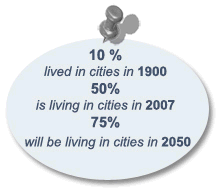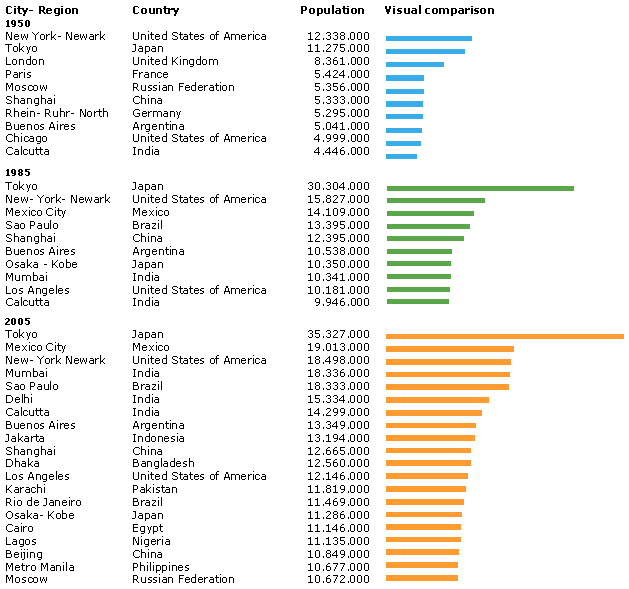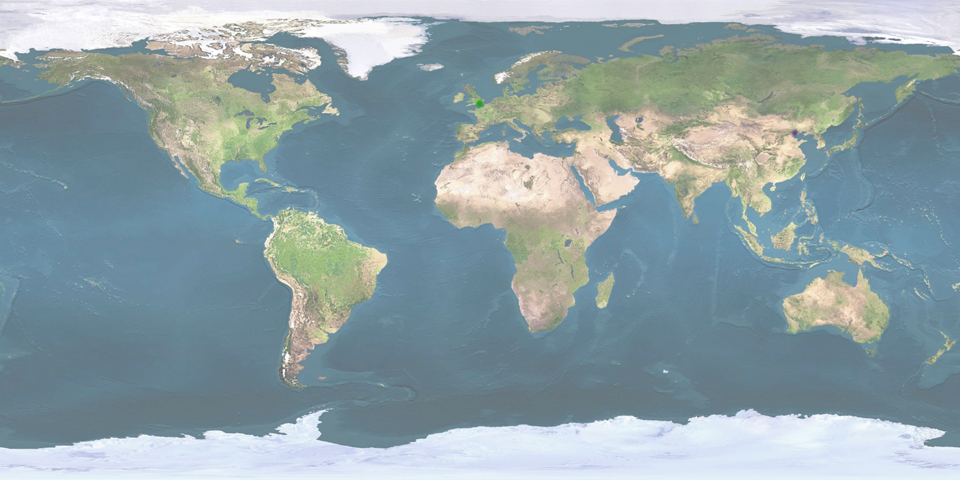2. Urbanisation
Growth of Cities

This rapid urbanisation takes place in more and more larger cities around the world. Most of the urban population lives in giant cities that dominate the global urban and economic system which are proliferating and expanding most rapidly. And we can witness a geographical shift in the focus of mega city growth from the more to the less developed regions, which can also be seen as a shift in the world's urban center of gravity (Pacione 2001, Soja, Kanai 2007) (see figures and table).
As the proportion of people living in million cities increased sevenfold in the 20th century in industrial countries, in developing countries the number of urban dwellers exploded 135-fold. The recent enormous growth of mega cities is largely sustained by the Third World (Bronger 1996, 2004).
If the 19th century was the century of million cities, the 20th century and especially the last 50 years, is the century of mega cities (Bronger 2004).
The pattern of world urbanisation is undergoing a dramatic change, we can expect that by 2035 as many as 15 cities will have populations between 20 and 30 million, and as many as 5 will have more than 30 million (De Blij, Murphy 2003).
The million-plus city regions form the peaks of the world map of population density and stand out as the primary power points of the urban global age (Soja, Kanai 2007).
The World's largest cities
Tasks: 1. Identify the distribution of the world's megacities. In which world region were the largest cities located in 1950?
2. Where are the largest cities in 1985 and in 2000? Can you recognise the "shift of gravity"?

Own illustration, Data: Soja, Kanai 2007

Own illustration, Data: Soja, Kanai 2007
